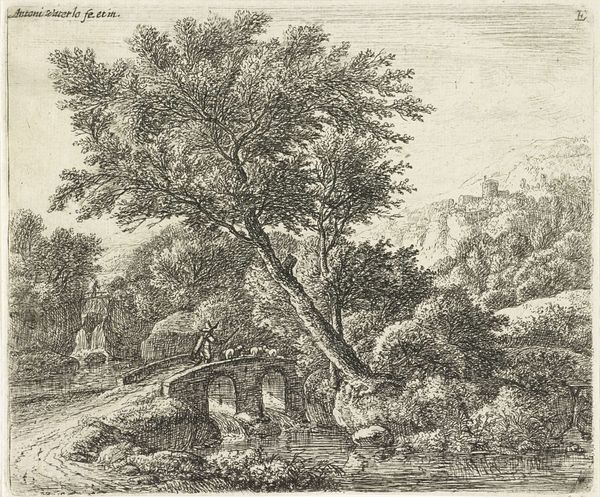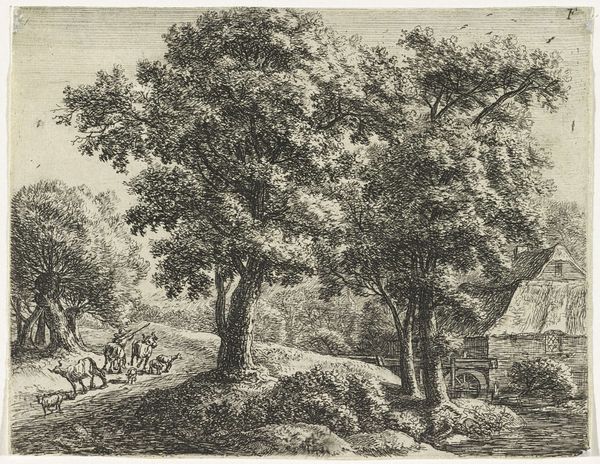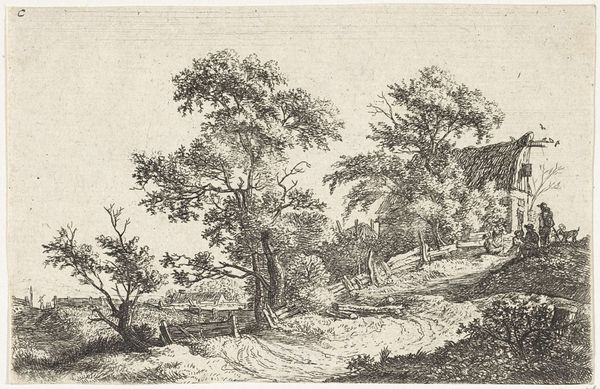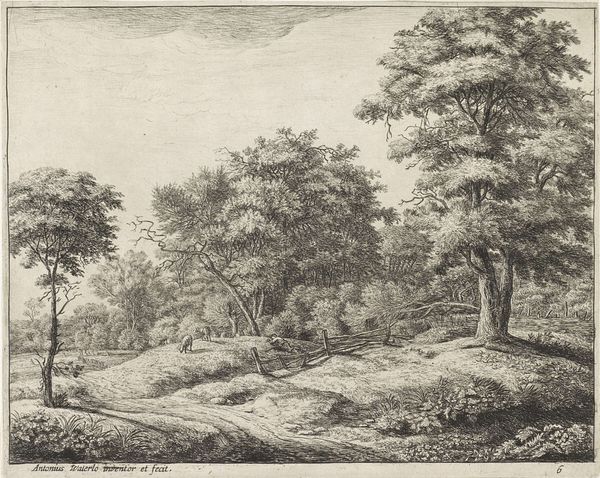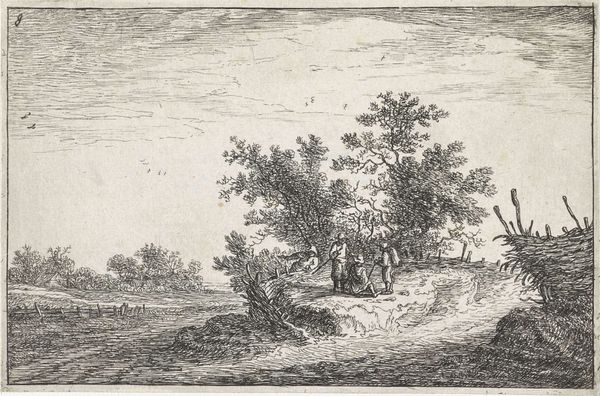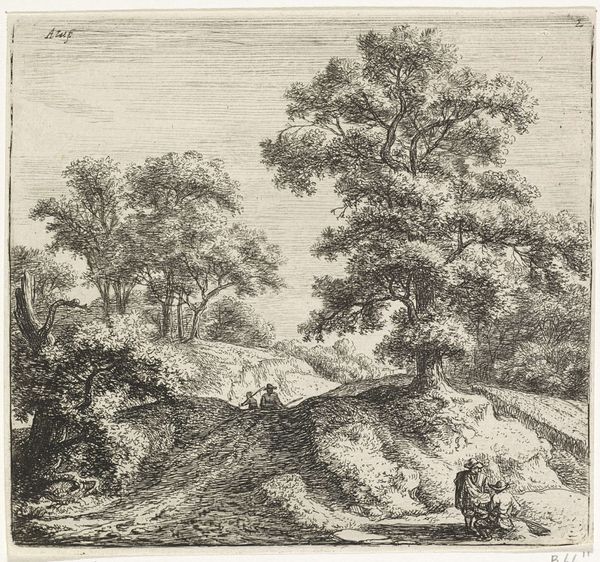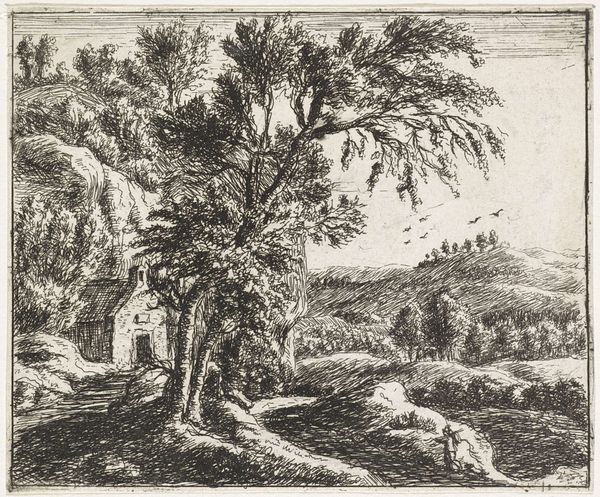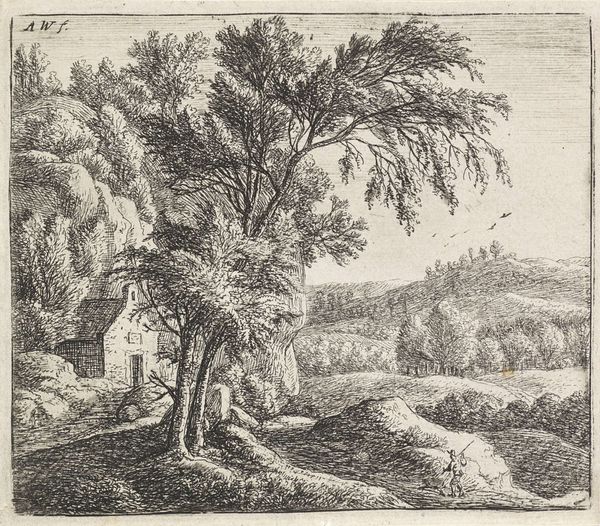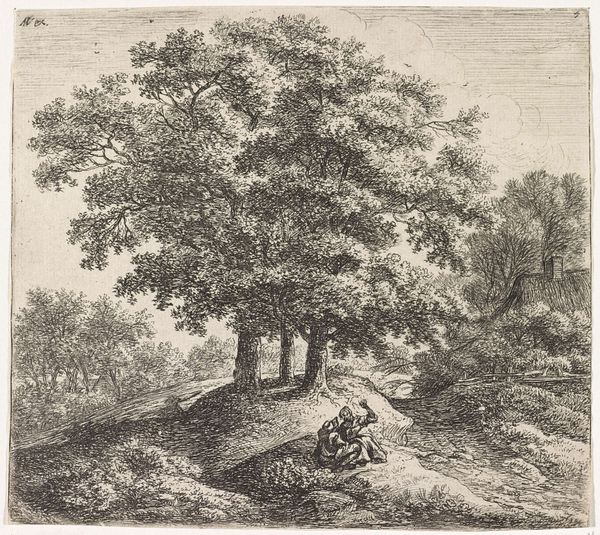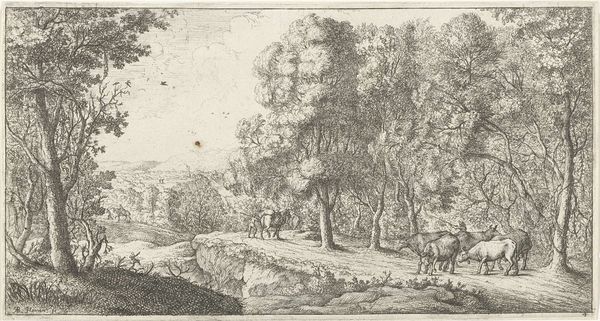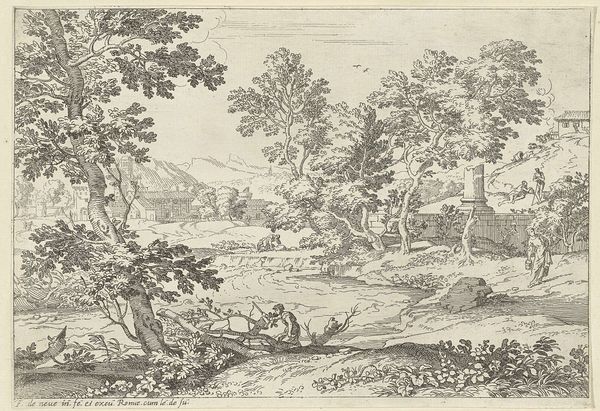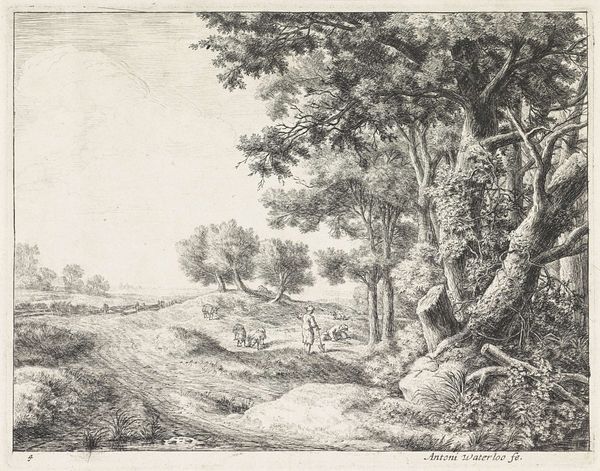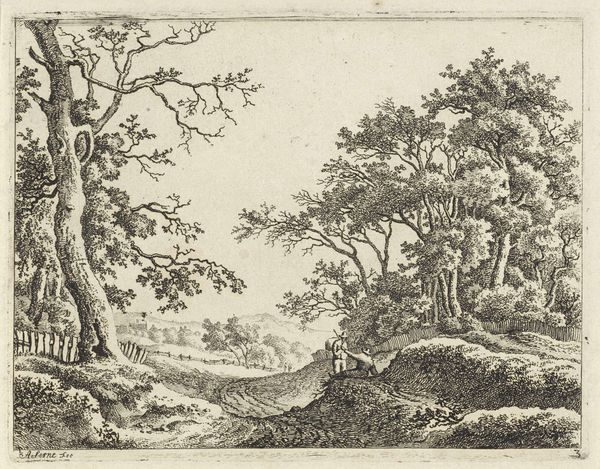
drawing, etching, ink
#
drawing
#
baroque
#
pen drawing
#
dutch-golden-age
#
etching
#
landscape
#
form
#
ink
#
line
Dimensions: height 128 mm, width 150 mm
Copyright: Rijks Museum: Open Domain
Anthonie Waterloo made this landscape with a chapel sometime in the 17th century, using etching. Etching involves covering a metal plate with a waxy, acid-resistant ground, and then scratching into that surface with a needle. When the plate is immersed in acid, the exposed lines are eaten away, creating grooves. Ink is then applied, the surface wiped clean, and the print pulled. The material qualities of etching allowed Waterloo to create a landscape with fine details and atmospheric effects. Look at the textured foliage of the trees, and the subtle gradations in the sky. The process also allowed him to create multiple impressions of the same image. Prints like this were relatively affordable and were widely disseminated, thus creating an expanding market for art, and shaping aesthetic tastes through repetition. By understanding the labor and material involved, we see how printmaking democratized art, connecting artistic skill with the rise of consumer culture in the 17th century.
Comments
No comments
Be the first to comment and join the conversation on the ultimate creative platform.
